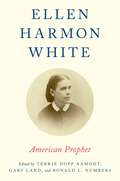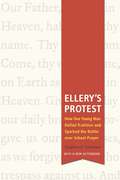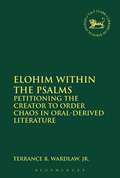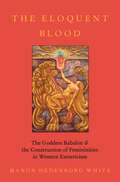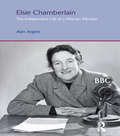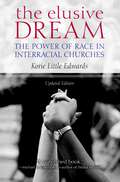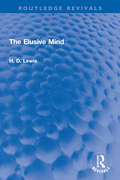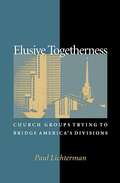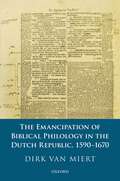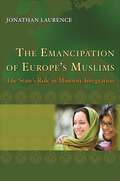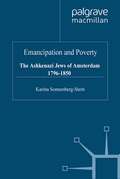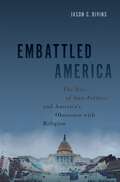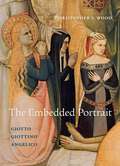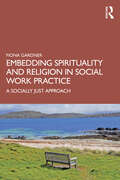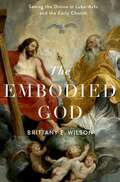- Table View
- List View
Ellen Harmon White: American Prophet
In America, as in Britain, the Victorian era enjoyed a long life, stretching from the 1830s to the 1910s. It marked the transition from a pre-modern to a modern way of life. Ellen Harmon White's life (1827-1915) spanned those years and then some, but the last three months of a single year, 1844, served as the pivot for everything else. When the Lord failed to return on October 22, as she and other followers of William Miller had predicted, White did not lose heart. Fired by a vision she experienced, White played the principal role in transforming a remnant minority of Millerites into the sturdy sect that soon came to be known as the Seventh-day Adventists. She and a small group of fellow believers emphasized a Saturday Sabbath and an imminent Advent. Today that flourishing denomination posts eighteen million adherents globally and one of the largest education, hospital, publishing, and missionary outreach programs in the world. Over the course of her life White generated 70,000 manuscript pages and letters, and produced 40 books that have enjoyed extremely wide circulation. She ranks as one of the most gifted and influential religious leaders in American history and this volume tells her story in a new and remarkably informative way. Some of the contributors identify with the Adventist tradition, some with other Christian denominations, and some with no religious tradition at all. Their essays call for White to be seen as a significant figure in American religious history and for her to be understood within the context of her times.
Ellery's Protest: How One Young Man Defied Tradition and Sparked the Battle over School Prayer
by Stephen D. Solomon“Solomon’s fascinating and sweeping history of the legal fight over mandatory school prayers is compelling, judicious, and elegantly written. Fabulous!” —David Rudenstine, Dean, Benjamin N. Cardozo School of Law, Yeshiva University “Stephen Solomon’s Ellery’s Protest provides a brilliant analysis of a major Supreme Court decision that redefined the relationship between church and state almost a half century ago. This study goes well beyond simply offering a gripping account of the course of litigation that brought before the Justices the contentious issue of prayer and Bible reading in public schools, though the thoroughness of that account would merit careful reading by itself. Especially impressive is the author’s deep probing of hitherto neglected sources, and invaluable primary material including extensive direct contact with the plaintiff, the ‘Ellery’ of the book’s title. Finally, and perhaps most impressive, is Solomon’s careful placement of the issue and the case in a far broader context that is as critical to national life and policy today as it was four and a half decades ago when the high Court first tackled these questions.” —Robert O’Neil, Professor of Law, University of Virginia Great legal decisions often result from the heroic actions of average citizens. Ellery’s Protest is the story of how one student’s objection to mandatory school prayer and Bible reading led to one of the most controversial court cases of the twentieth century—and a decision that still reverberates in the battle over the role of religion in public life. Abington School District v. Schempp began its journey through the nation’s courts in 1956, when sixteen-year-old Ellery Schempp protested his public school’s compulsory prayer and Bible-reading period by reading silently from the Koran. Ejected from class for his actions, Schempp sued the school district. The Supreme Court’s decision in his favor was one of the most important rulings on religious freedom in our nation’s history. It prompted a conservative backlash that continues to this day, in the skirmishes over school prayer, the teaching of creationism and intelligent design, and the recitation of the Pledge of Allegiance with the phrase “under God.” Author Stephen D. Solomon tells the fascinating personal and legal drama of the Schempp case: the family’s struggle against the ugly reactions of neighbors, and the impassioned courtroom clashes as brilliant lawyers on both sides argued about the meaning of religious freedom. But Schempp was not the only case challenging religious exercises in the schools at the time, and Ellery’s Protest describes the race to the Supreme Court among the attorneys for four such cases, including one involving the colorful atheist Madalyn Murray. Solomon also explores the political, cultural, and religious roots of the controversy. Contrary to popular belief, liberal justices did not kick God out of the public schools. Bitter conflict over school Bible reading had long divided Protestants and Catholics in the United States. Eventually, it was the American people themselves who removed most religious exercises from public education as a more religiously diverse nation chose tolerance over sectarianism. Ellery’s Protest offers a vivid account of the case that embodied this change, and a reminder that conservative justices of the 1950s and 60s not only signed on to the Schempp decision, but strongly endorsed the separation of church and state.
Elohim within the Psalms: Petitioning the Creator to Order Chaos in Oral-Derived Literature (The Library of Hebrew Bible/Old Testament Studies #602)
by Terrance Randall Wardlaw Jr.The issue of the so-called Elohistic Psalter has intrigued biblical scholars since the rise of the historical-critical enterprise. Scholars have attempted to discover why the name Elohim is used almost exclusively within Pss 42–83, and in particular they have attempted to identify the historical circumstances which explain this phenomenon. Traditionally, an original Yhwh was understood to have been replaced by Elohim. Frank-Lothar Hossfeld and the late Erich Zenger propose that the use of the title Elohim is theologically motivated, and they account for this phenomenon in their redaction-historical work. Wardlaw here builds upon their work (1) by integrating insights from Dell Hymes, William Miles Foley, and Susan Niditch with regard to oral-traditional cultures, and (2) by following the text-linguistic approach of Eep Talstra and Christof Hardmeier and listening to canonical texture as a faithful witness to Israel's religious traditions. Wardlaw proposes that the name Elohim within the Psalms is a theologically-laden term, and that its usage is related to pentateuchal traditions.
The Eloquent Blood: The Goddess Babalon and the Construction of Femininities in Western Esotericism (Oxford Studies in Western Esotericism)
by Manon Hedenborg WhiteIn the conventional dichotomy of chaste, pure Madonna and libidinous whore, the former has usually been viewed as the ideal form of femininity. However, there is a modern religious movement in which the negative stereotype of the harlot is inverted and exalted. The Eloquent Blood focuses on the changing construction of femininity and feminine sexuality in interpretations of the goddess Babalon. A central deity in Thelema, the religion founded by the notorious British occultist Aleister Crowley (1875-1947), Babalon is based on Crowley's favorable reinterpretation of the biblical Whore of Babylon, and is associated with liberated female sexuality and the spiritual ideal of passionate union with existence. Analyzing historical and contemporary written sources, qualitative interviews, and ethnographic fieldwork in the Anglo-American esoteric milieu, the study traces interpretations of Babalon from the works of Crowley and some of his key disciples--including the rocket scientist John "Jack" Whiteside Parsons, and the enigmatic British occultist Kenneth Grant--until the present. From the 1990s onwards, this study shows, female and LGBTQ esotericists have challenged historical interpretations of Babalon, drawing on feminist and queer thought and conceptualizing femininity in new ways. Tracing the trajectory of a particular gendered symbol from the fin-de-siècle until today, Manon Hedenborg White explores the changing role of women in Western esotericism, and shows how evolving constructions of gender have shaped the development of esotericism. Combining research on historical and contemporary Western esotericism with feminist and queer theory, the book sheds new light on the ways in which esoteric movements and systems of thought have developed over time in relation to political movements.
ELOQUENT BLOOD OSWE C: The Goddess Babalon and the Construction of Femininities in Western Esotericism (Oxford Studies in Western Esotericism)
by Manon Hedenborg WhiteIn the conventional dichotomy of chaste, pure Madonna and libidinous whore, the former has usually been viewed as the ideal form of femininity. However, there is a modern religious movement in which the negative stereotype of the harlot is inverted and exalted. The Eloquent Blood focuses on the changing construction of femininity and feminine sexuality in interpretations of the goddess Babalon. A central deity in Thelema, the religion founded by the notorious British occultist Aleister Crowley (1875-1947), Babalon is based on Crowley's favorable reinterpretation of the biblical Whore of Babylon, and is associated with liberated female sexuality and the spiritual ideal of passionate union with existence. Analyzing historical and contemporary written sources, qualitative interviews, and ethnographic fieldwork in the Anglo-American esoteric milieu, the study traces interpretations of Babalon from the works of Crowley and some of his key disciples--including the rocket scientist John "Jack" Whiteside Parsons, and the enigmatic British occultist Kenneth Grant--until the present. From the 1990s onwards, this study shows, female and LGBTQ esotericists have challenged historical interpretations of Babalon, drawing on feminist and queer thought and conceptualizing femininity in new ways. Tracing the trajectory of a particular gendered symbol from the fin-de-siècle until today, Manon Hedenborg White explores the changing role of women in Western esotericism, and shows how evolving constructions of gender have shaped the development of esotericism. Combining research on historical and contemporary Western esotericism with feminist and queer theory, the book sheds new light on the ways in which esoteric movements and systems of thought have developed over time in relation to political movements.
Elsie Chamberlain: The Independent Life of a Woman Minister (Gender, Theology and Spirituality)
by Alan ArgentElsie Chamberlain was a leading figure in British broadcasting and religious life. She was a pioneer in many areas: the first woman chaplain to the armed forces; the first nonconformist minister to marry an Anglican clergyman; the first woman producer in the religious broadcasting dept of the BBC and the first woman to present the daily service on the radio. Her broadcasting accustomed many listeners to the idea of a woman leading public worship. And she became the first woman to occupy the chair of the Congregational Union of England and Wales and almost certainly the first woman anywhere in the world to head a major denomination. Elsie Chamberlain is the first full biography and a critical appreciation of this exceptional woman. Using original church and BBC archive sources, the book tells the story of a woman who did more than any other to change the way Christian women ministers are viewed.
Elsie Chamberlain: The Independent Life of a Woman Minister (Gender, Theology and Spirituality)
by Alan ArgentElsie Chamberlain was a leading figure in British broadcasting and religious life. She was a pioneer in many areas: the first woman chaplain to the armed forces; the first nonconformist minister to marry an Anglican clergyman; the first woman producer in the religious broadcasting dept of the BBC and the first woman to present the daily service on the radio. Her broadcasting accustomed many listeners to the idea of a woman leading public worship. And she became the first woman to occupy the chair of the Congregational Union of England and Wales and almost certainly the first woman anywhere in the world to head a major denomination. Elsie Chamberlain is the first full biography and a critical appreciation of this exceptional woman. Using original church and BBC archive sources, the book tells the story of a woman who did more than any other to change the way Christian women ministers are viewed.
The Elusive Dream: The Power of Race in Interracial Churches
by Korie Little EdwardsIt is communion Sunday at a mixed-race church. A black pastor and white head elder stand before the sanctuary as lay leaders pass out the host. An African-American woman sings a gospel song as a woman of Asian descent plays the piano. Then a black woman in the congregation throws her hands up and yells, over and over, "Thank you Lawd!" A few other African-Americans in the pews say "Amen," while white parishioners sit stone-faced. The befuddled white head elder reads aloud from the Bible, his soft voice drowned out by the shouts of praise. Even in this proudly interracial church, America's racial divide is a constant presence. In The Elusive Dream, Korie L. Edwards presents the surprising results of an in-depth study of interracial churches: they help perpetuate the very racial inequality they aim to abolish. To arrive at this conclusion, she combines a nuanced analysis of national survey data with an in-depth examination of one particular church. She shows that mixed-race churches adhere strongly to white norms. African Americans in multiracial settings adapt their behavior to make white congregants comfortable. Behavior that white worshipers perceive as out of bounds is felt by blacks as too limiting. Yet to make interracial churches work, blacks must adjust their behavior to accommodate the predilections of whites. They conform to white expectations in church just as they do elsewhere. Thorough, incisive, and surprising, The Elusive Dream raises provocative questions about the ongoing problem of race in the national culture.
The Elusive Dream: The Power of Race in Interracial Churches
by Korie Little EdwardsIt is communion Sunday at a mixed-race church. A black pastor and white head elder stand before the sanctuary as lay leaders pass out the host. An African-American woman sings a gospel song as a woman of Asian descent plays the piano. Then a black woman in the congregation throws her hands up and yells, over and over, "Thank you Lawd!" A few other African-Americans in the pews say "Amen," while white parishioners sit stone-faced. The befuddled white head elder reads aloud from the Bible, his soft voice drowned out by the shouts of praise. Even in this proudly interracial church, America's racial divide is a constant presence. In The Elusive Dream, Korie L. Edwards presents the surprising results of an in-depth study of interracial churches: they help perpetuate the very racial inequality they aim to abolish. To arrive at this conclusion, she combines a nuanced analysis of national survey data with an in-depth examination of one particular church. She shows that mixed-race churches adhere strongly to white norms. African Americans in multiracial settings adapt their behavior to make white congregants comfortable. Behavior that white worshipers perceive as out of bounds is felt by blacks as too limiting. Yet to make interracial churches work, blacks must adjust their behavior to accommodate the predilections of whites. They conform to white expectations in church just as they do elsewhere. Thorough, incisive, and surprising, The Elusive Dream raises provocative questions about the ongoing problem of race in the national culture.
The Elusive Mind (Routledge Revivals)
by H. D. LewisFirst published in 1969, The Elusive Mind argues that the mental processes are of a quite different nature from physical ones and belong to an entity which is elusive in the sense that it can only be known, in the first instance, by each person in his own case in the course of having any kind of experience. This ‘elusive’ self is much involved with the body in any conditions we know, but it could also survive the dissolution of the body. The views of thinkers like Ryle, Hampshire, Malcolm, Feigl, and Ayer are subjected to an exceptionally close and critical scrutiny. In presenting these views, the author offers us the substance of the first series of Gifford Lectures he delivered in the University of Edinburgh; and, in what he says on such topics as dreaming; mysticism; and the ‘I-Thou’ relation and on Christian Theology. This book will be an essential read for scholars and researchers of philosophy, philosophy of mind, ethics, and religion.
The Elusive Mind (Routledge Revivals)
by H. D. LewisFirst published in 1969, The Elusive Mind argues that the mental processes are of a quite different nature from physical ones and belong to an entity which is elusive in the sense that it can only be known, in the first instance, by each person in his own case in the course of having any kind of experience. This ‘elusive’ self is much involved with the body in any conditions we know, but it could also survive the dissolution of the body. The views of thinkers like Ryle, Hampshire, Malcolm, Feigl, and Ayer are subjected to an exceptionally close and critical scrutiny. In presenting these views, the author offers us the substance of the first series of Gifford Lectures he delivered in the University of Edinburgh; and, in what he says on such topics as dreaming; mysticism; and the ‘I-Thou’ relation and on Christian Theology. This book will be an essential read for scholars and researchers of philosophy, philosophy of mind, ethics, and religion.
Elusive Togetherness: Church Groups Trying to Bridge America's Divisions
by Paul LichtermanMany scholars and citizens alike have counted on civic groups to create broad ties that bind society. Some hope that faith-based civic groups will spread their reach as government retreats. Yet few studies ask how, if at all, civic groups reach out to their wider community. Can religious groups--long central in civic America--create broad, empowering social ties in an unequal, diverse society? Over three years, Paul Lichterman studied nine liberal and conservative Protestant-based volunteering and advocacy projects in a mid-sized American city. He listened as these groups tried to create bridges with other community groups, social service agencies, and low-income people, just as the 1996 welfare reforms were taking effect. Counter to long-standing arguments, Lichterman discovered that powerful customs of interaction inside the groups often stunted external ties and even shaped religion's impact on the groups. Comparing groups, he found that successful bridges outward depend on group customs which invite reflective, critical discussion about a group's place amid surrounding groups and institutions. Combining insights from Alexis de Tocqueville, John Dewey, and Jane Addams with contemporary sociology, Elusive Togetherness addresses enduring questions about civic and religious life that elude the popular "social capital" concept. To create broad civic relationships, groups need more than the right religious values, political beliefs, or resources. They must learn new ways of being groups.
Elvis, Strait, to Jesus: An Iconic Producer's Journey with Legends of Rock 'n' Roll, Country, and Gospel Music
by Tony Brown"In the world of modern country music history, Tony Brown has earned a critical spot...[as] one of the top creative minds of the past four decades." -- Billboard.comThis striking photographic journey shows how Tony Brown became the King of Nashville: from pianist for Elvis Presley, to president of MCA Records Nashville, to producer of over 100 number-one country songs that are beloved by millions. Elvis, Strait, to Jesus celebrates a music icon's legendary rise, his history-making industry relationships, and how these friendships gave us the songs we still live by.The magic of Tony Brown's forty-year career is revealed in pictures, with historical and behind-the-scenes images, snapshots from the "Elvis years," and stylish contemporary portraits staged in a French Renaissance chair of friends, musicians, and artists including:George Strait - Reba McEntire - Trisha Yearwood - Brooks & Dunn - Vince Gill - Lionel Richie - Lyle Lovett - Patty Loveless - Steve Earle - Rosanne Cash - Emmylou Harris - Jimmy Buffett - Marty Stuart - Bernie Taupin - Don Was - William Lee Golden - Rodney Crowell - David Briggs - Glen D. Hardin - Donnie Sumner, and more.Tony's fascinating anecdotes accompanying the photos unveil the encounters that led to mega-hits by George Strait, Reba McEntire, Trisha Yearwood, and countless others; he recounts how he became the accidental founder of Americana music with the edgy signings of Steve Earle and Lyle Lovett to MCA, as well as his unforgettable memories of life on tour with Elvis Presley. He also retraces his North Carolina roots and honors the legends of rock, country, and gospel with whom he forged an inimitable music legacy. This special tribute is one that no fan of music or artistic photography should be without.
The Emancipation of Biblical Philology in the Dutch Republic, 1590-1670
by Dirk van MiertThe Emancipation of Biblical Philology in the Dutch Republic, 1590-1670 argues that the application of tools, developed in the study of ancient Greek and Latin authors, to the Bible was aimed at stabilizing the biblical text but had the unintentional effect that the text grew more and more unstable. Baruch Spinoza (1632-1677) capitalized on this tradition in his notorious Theological-political Treatise (1670). However, the foundations on which his radical biblical scholarship is built were laid by Reformed philologists who started from the hermeneutical assumption that philology was the servant of reformed dogma. On the basis of this principle, they pushed biblical scholarship to the centre of historical studies during the first half of the seventeenth century. Dirk van Miert shows how Jacob Arminius, Franciscus Gomarus, the translators and revisers of the States' Translation, Daniel Heinsius, Hugo Grotius, Claude Saumaise, Isaac de La Peyrère, and Isaac Vossius all drew on techniques developed by classical scholars of Renaissance humanism, notably Joseph Scaliger, who devoted themselves to the study of manuscripts, (oriental) languages, and ancient history. Van Miert assesses and compares the accomplishments of these scholars in textual criticism, the analysis of languages, and the reconstruction of political and cultural historical contexts, highlighting that their methods were closely linked.
The Emancipation of Biblical Philology in the Dutch Republic, 1590-1670
by Dirk van MiertThe Emancipation of Biblical Philology in the Dutch Republic, 1590-1670 argues that the application of tools, developed in the study of ancient Greek and Latin authors, to the Bible was aimed at stabilizing the biblical text but had the unintentional effect that the text grew more and more unstable. Baruch Spinoza (1632-1677) capitalized on this tradition in his notorious Theological-political Treatise (1670). However, the foundations on which his radical biblical scholarship is built were laid by Reformed philologists who started from the hermeneutical assumption that philology was the servant of reformed dogma. On the basis of this principle, they pushed biblical scholarship to the centre of historical studies during the first half of the seventeenth century. Dirk van Miert shows how Jacob Arminius, Franciscus Gomarus, the translators and revisers of the States' Translation, Daniel Heinsius, Hugo Grotius, Claude Saumaise, Isaac de La Peyrère, and Isaac Vossius all drew on techniques developed by classical scholars of Renaissance humanism, notably Joseph Scaliger, who devoted themselves to the study of manuscripts, (oriental) languages, and ancient history. Van Miert assesses and compares the accomplishments of these scholars in textual criticism, the analysis of languages, and the reconstruction of political and cultural historical contexts, highlighting that their methods were closely linked.
The Emancipation of Europe's Muslims: The State's Role in Minority Integration
by Jonathan LaurenceThe Emancipation of Europe's Muslims traces how governments across Western Europe have responded to the growing presence of Muslim immigrants in their countries over the past fifty years. Drawing on hundreds of in-depth interviews with government officials and religious leaders in France, Germany, Italy, the Netherlands, the United Kingdom, Morocco, and Turkey, Jonathan Laurence challenges the widespread notion that Europe’s Muslim minorities represent a threat to liberal democracy. He documents how European governments in the 1970s and 1980s excluded Islam from domestic institutions, instead inviting foreign powers like Saudi Arabia, Algeria, and Turkey to oversee the practice of Islam among immigrants in European host societies. But since the 1990s, amid rising integration problems and fears about terrorism, governments have aggressively stepped up efforts to reach out to their Muslim communities and incorporate them into the institutional, political, and cultural fabrics of European democracy. The Emancipation of Europe’s Muslims places these efforts--particularly the government-led creation of Islamic councils--within a broader theoretical context and gleans insights from government interactions with groups such as trade unions and Jewish communities at previous critical junctures in European state-building. By examining how state-mosque relations in Europe are linked to the ongoing struggle for religious and political authority in the Muslim-majority world, Laurence sheds light on the geopolitical implications of a religious minority’s transition from outsiders to citizens. This book offers a much-needed reassessment that foresees the continuing integration of Muslims into European civil society and politics in the coming decades.
The Emancipation of Europe's Muslims: The State's Role in Minority Integration
by Jonathan LaurenceThe Emancipation of Europe's Muslims traces how governments across Western Europe have responded to the growing presence of Muslim immigrants in their countries over the past fifty years. Drawing on hundreds of in-depth interviews with government officials and religious leaders in France, Germany, Italy, the Netherlands, the United Kingdom, Morocco, and Turkey, Jonathan Laurence challenges the widespread notion that Europe’s Muslim minorities represent a threat to liberal democracy. He documents how European governments in the 1970s and 1980s excluded Islam from domestic institutions, instead inviting foreign powers like Saudi Arabia, Algeria, and Turkey to oversee the practice of Islam among immigrants in European host societies. But since the 1990s, amid rising integration problems and fears about terrorism, governments have aggressively stepped up efforts to reach out to their Muslim communities and incorporate them into the institutional, political, and cultural fabrics of European democracy. The Emancipation of Europe’s Muslims places these efforts--particularly the government-led creation of Islamic councils--within a broader theoretical context and gleans insights from government interactions with groups such as trade unions and Jewish communities at previous critical junctures in European state-building. By examining how state-mosque relations in Europe are linked to the ongoing struggle for religious and political authority in the Muslim-majority world, Laurence sheds light on the geopolitical implications of a religious minority’s transition from outsiders to citizens. This book offers a much-needed reassessment that foresees the continuing integration of Muslims into European civil society and politics in the coming decades.
Emancipation & Poverty: The Ashkenazi Jews of Amsterdam (St Antony's Series)
by K. Sonnenberg-SternThis book is the first comprehensive study examining the impact of emancipation on the lives of Amsterdam's Jews. The enactment of equality in 1796 failed to provide these Jews with similar rights and opportunities as the non-Jews; two-thirds of Amsterdam's Jewish community remained poor for much of the nineteenth century. Even though the declaration of emancipation should have provided the Jews with legal and social equality, the Dutch authorities continued to retain their perception of the Jews as a separate and different group of predominantly uncultured paupers and never made it their priority to remove all restrictive measures.
Embattled America: The Rise of Anti-Politics and America's Obsession with Religion
by Jason C. BivinsHistories of political religion since the 1960s often center on the rise of the powerful conservative evangelical voting bloc since the 1970s. One of the beliefs that has united these citizens is the idea that they are treated unfairly or are marginalized, despite their significant influence on public life. From the ascent of Reagan to the "Contract with America," from 9/11 to Obama to Trump--these claims have moved steadily to the center of conservative activism. Scholars of religion have approached these phenomena with great caution, generally focusing on institutional history, or relying on journalistic conveniences like "populism," or embracing the self-understandings of evangelicals themselves. None of these approaches is sufficiently calibrated to decoding the fierce convergence of online conspiracy theory, public violence, white supremacy, and religious authoritarianism. Accepting the narrative of Embattlement on its own terms, or examining it as mere turbulence on the path of American pluralism, overlooks how such deeper structural or atmospheric conditions work through this discourse to undermine the actual practice of democratic politics. Exploring the impact of these claims through case studies ranging from the Tea Party to Birthers to anti-sharia laws, Embattled America digs deeper into the debates between Martyrs (those who profess persecution) and Whistleblowers (those who sanctimoniously refute such claims). Hidden beneath each of these episodes is a series of ambivalences about democracy that require attention. Jason Bivins argues that the claims of Martyrs and Whistleblowers are symptoms of America's larger failings to strengthen the conditions for democratic life, and thus that rather than engaging their claims on the merits, concerned citizens should reassess fundamental democratic norms as part of a broader challenge to embolden American citizenship and institutions.
Embattled America: The Rise of Anti-Politics and America's Obsession with Religion
by Jason C. BivinsHistories of political religion since the 1960s often center on the rise of the powerful conservative evangelical voting bloc since the 1970s. One of the beliefs that has united these citizens is the idea that they are treated unfairly or are marginalized, despite their significant influence on public life. From the ascent of Reagan to the "Contract with America," from 9/11 to Obama to Trump--these claims have moved steadily to the center of conservative activism. Scholars of religion have approached these phenomena with great caution, generally focusing on institutional history, or relying on journalistic conveniences like "populism," or embracing the self-understandings of evangelicals themselves. None of these approaches is sufficiently calibrated to decoding the fierce convergence of online conspiracy theory, public violence, white supremacy, and religious authoritarianism. Accepting the narrative of Embattlement on its own terms, or examining it as mere turbulence on the path of American pluralism, overlooks how such deeper structural or atmospheric conditions work through this discourse to undermine the actual practice of democratic politics. Exploring the impact of these claims through case studies ranging from the Tea Party to Birthers to anti-sharia laws, Embattled America digs deeper into the debates between Martyrs (those who profess persecution) and Whistleblowers (those who sanctimoniously refute such claims). Hidden beneath each of these episodes is a series of ambivalences about democracy that require attention. Jason Bivins argues that the claims of Martyrs and Whistleblowers are symptoms of America's larger failings to strengthen the conditions for democratic life, and thus that rather than engaging their claims on the merits, concerned citizens should reassess fundamental democratic norms as part of a broader challenge to embolden American citizenship and institutions.
The Embedded Portrait: Giotto, Giottino, Angelico
by Christopher S. WoodA new study of the early Renaissance portraitIn fourteenth-century Italy, ever more women and men—not only clergy but also laity—introduced their own portraits into sacred paintings. Images of modern supplicants, submissive and prayerful, shared space with the holy narratives. The portraits mimicked the first worshippers of Christ: Mary, the Three Magi, Mary Magdalene. At the same time, they modeled, for modern viewers, ideal involvement in the emotion-laden stories. In The Embedded Portrait, Christopher S. Wood traces these incursions of the real and profane into Florentine sacred painting between Giotto and Fra Angelico.The portraits not only intruded upon a sacred space, but also intervened in an artwork. The pressure exerted by the modern interlopers—their lives and experiences, implied by their portraits—threatened the formal closure that had served as a powerful symbolic form of the pact between God and humans. The Embedded Portrait reconstructs this art historical drama from the point of view of the artists rather than the patrons. Following clues left by Vasari, the book assigns a leading role to the painter Giottino, or &“little Giotto.&” Little-known today but highly regarded in his lifetime, Giottino proposed a new manner of painting that was later realized by Fra Angelico through his own innovative approach to the problem of the embedded portrait.Seeking not to stabilize the artworks but to extend their reach, the interpretations offered in The Embedded Portrait re-create and update the psychic and libidinal energies that gave rise to these works in the first place.
The Embedded Portrait: Giotto, Giottino, Angelico
by Christopher S. WoodA new study of the early Renaissance portraitIn fourteenth-century Italy, ever more women and men—not only clergy but also laity—introduced their own portraits into sacred paintings. Images of modern supplicants, submissive and prayerful, shared space with the holy narratives. The portraits mimicked the first worshippers of Christ: Mary, the Three Magi, Mary Magdalene. At the same time, they modeled, for modern viewers, ideal involvement in the emotion-laden stories. In The Embedded Portrait, Christopher S. Wood traces these incursions of the real and profane into Florentine sacred painting between Giotto and Fra Angelico.The portraits not only intruded upon a sacred space, but also intervened in an artwork. The pressure exerted by the modern interlopers—their lives and experiences, implied by their portraits—threatened the formal closure that had served as a powerful symbolic form of the pact between God and humans. The Embedded Portrait reconstructs this art historical drama from the point of view of the artists rather than the patrons. Following clues left by Vasari, the book assigns a leading role to the painter Giottino, or &“little Giotto.&” Little-known today but highly regarded in his lifetime, Giottino proposed a new manner of painting that was later realized by Fra Angelico through his own innovative approach to the problem of the embedded portrait.Seeking not to stabilize the artworks but to extend their reach, the interpretations offered in The Embedded Portrait re-create and update the psychic and libidinal energies that gave rise to these works in the first place.
Embedding Spirituality and Religion in Social Work Practice: A Socially Just Approach
by Fiona GardnerBlending material from social work with religious and spiritual sources, this book makes explicit that engaging with spirituality in its broadest sense is an essential aspect of socially just social work practice. Gardner connects shared understandings of spiritual/religious traditions, critically reflective social work, First Nations relational world views, green and relational approaches. Through multiple unique case studies, Embedding Spirituality and Religion in Social Work Practice: A Socially Just Approach outlines the theoretical framework of critical spirituality, which is explored as a way of workers’ understanding their own and others’ sense of meaning, whether it is spiritual and/or religious, and to encourage workers to be mindful, open, humble and energised as workers. Combining the theoretical and practical, this book outlines strategies and processes to ensure social workers embed spirituality in their practice constructively and inclusively across all areas of practice. This book will be of interest to those engaged in the wider field of social work, from direct service to policy development.
Embedding Spirituality and Religion in Social Work Practice: A Socially Just Approach
by Fiona GardnerBlending material from social work with religious and spiritual sources, this book makes explicit that engaging with spirituality in its broadest sense is an essential aspect of socially just social work practice. Gardner connects shared understandings of spiritual/religious traditions, critically reflective social work, First Nations relational world views, green and relational approaches. Through multiple unique case studies, Embedding Spirituality and Religion in Social Work Practice: A Socially Just Approach outlines the theoretical framework of critical spirituality, which is explored as a way of workers’ understanding their own and others’ sense of meaning, whether it is spiritual and/or religious, and to encourage workers to be mindful, open, humble and energised as workers. Combining the theoretical and practical, this book outlines strategies and processes to ensure social workers embed spirituality in their practice constructively and inclusively across all areas of practice. This book will be of interest to those engaged in the wider field of social work, from direct service to policy development.
The Embodied God: Seeing the Divine in Luke-Acts and the Early Church
by Brittany E. WilsonAs inheritors of Platonic traditions, many Jews and Christians today do not believe that God has a body. God is instead invisible and incorporeal, and even though Christians believe that God can be seen in Jesus, God otherwise remains veiled from human sight. In this ground-breaking work, Brittany E. Wilson challenges this prevalent view by arguing that early Jews and Christians often envisioned God as having a visible form. Within the New Testament, Luke-Acts in particular emerges as an important example of a text that portrays God in visually tangible ways. According to Luke, God is a perceptible, concrete being who can take on a variety of different forms, as well as a being who is intimately intertwined with human fleshliness in the form of Jesus. In this way, the God of Israel does not adhere to the incorporeal deity of Platonic philosophy, especially as read through post-Enlightenment eyes. Given the corporeal connections between God and Jesus, Luke's depiction of Jesus's body also points ahead to future controversies concerning his divinity and humanity in the early church. Indeed, questions concerning God's body are inextricably linked with Christology and shed light on how we are to understand Jesus's own visible embodiment in relation to God. In The Embodied God, Wilson reframes approaches to early Christology within New Testament scholarship and calls for a new way of thinking about divine-and human-bodies and embodied experience.
